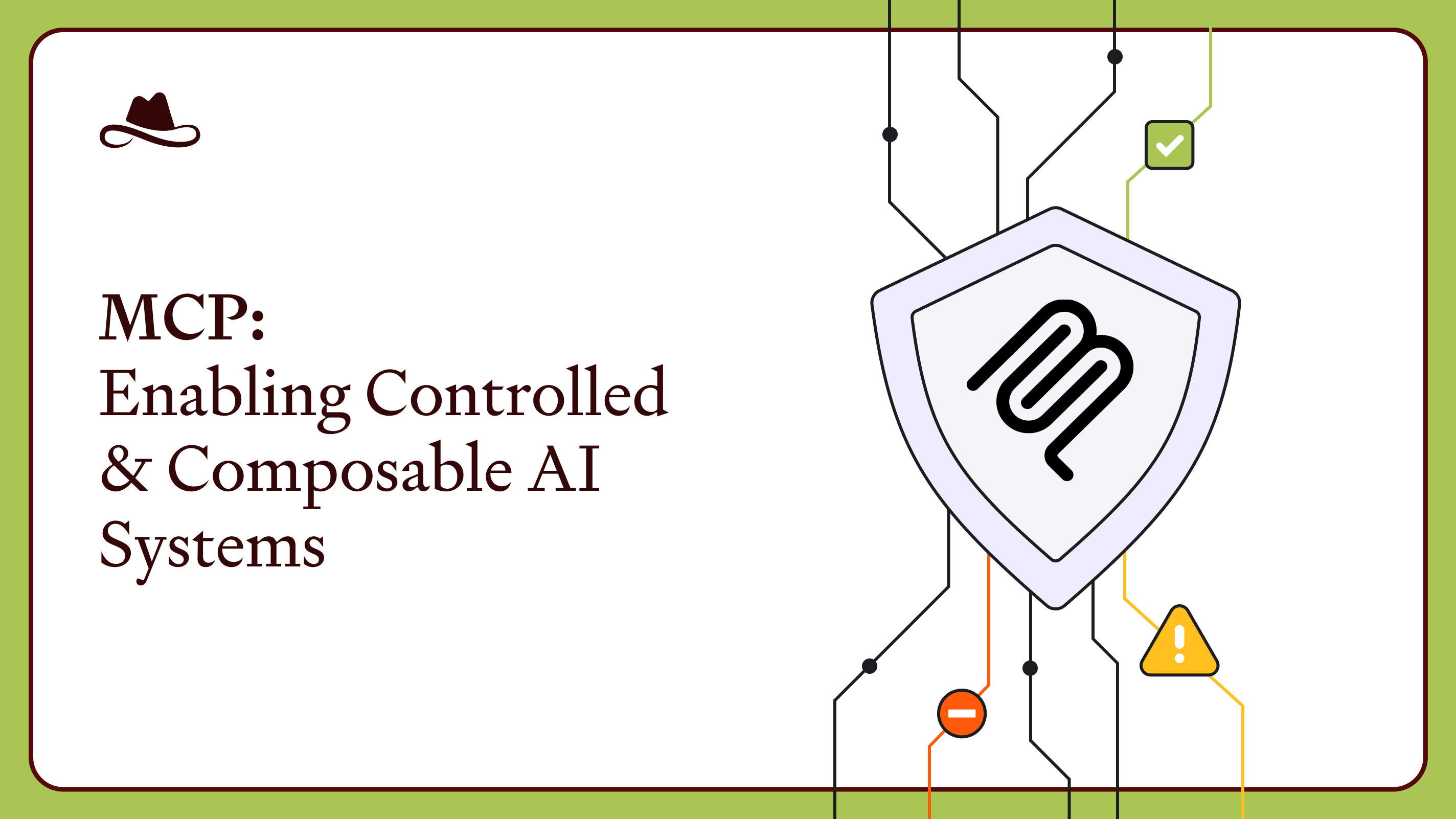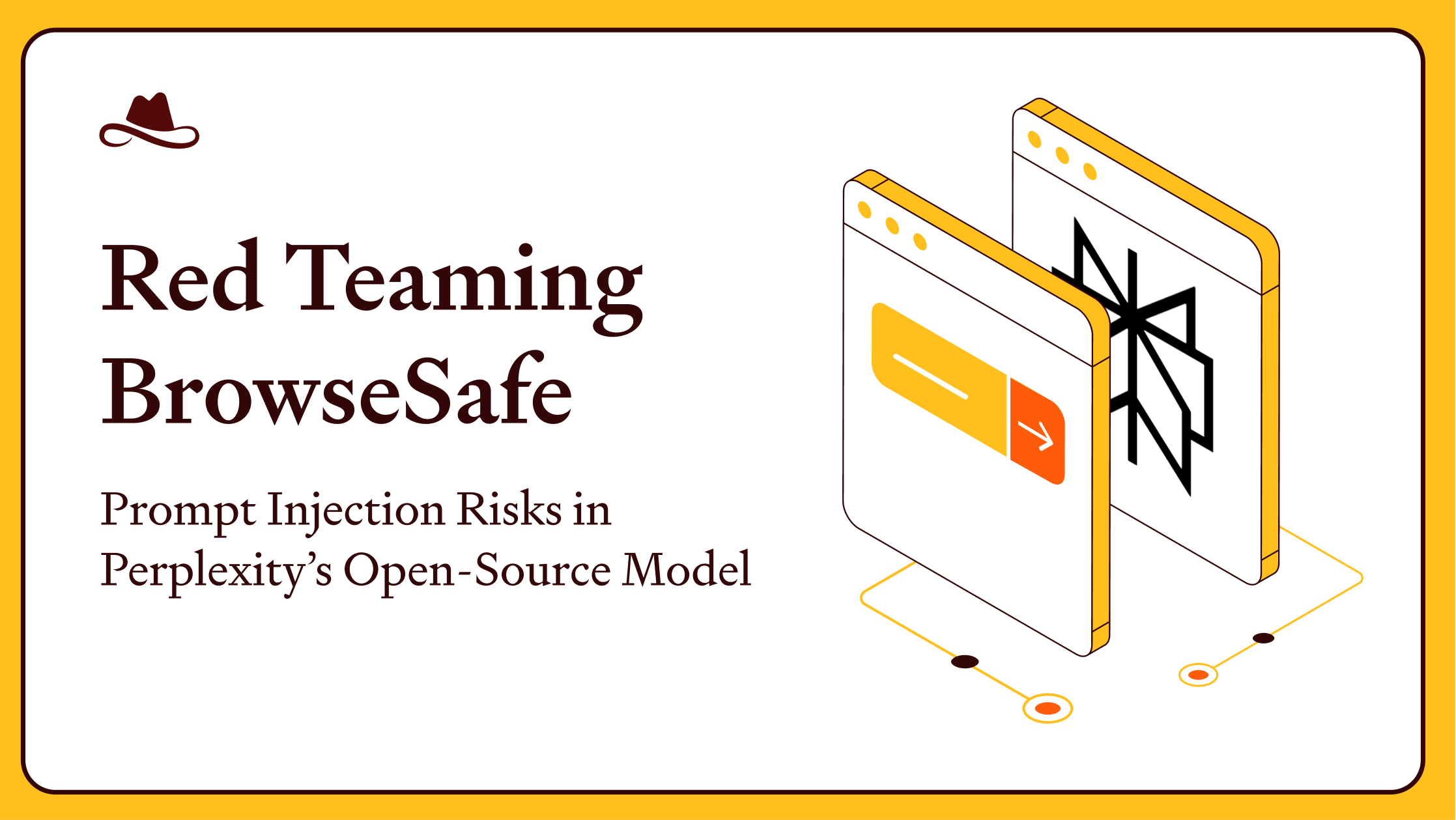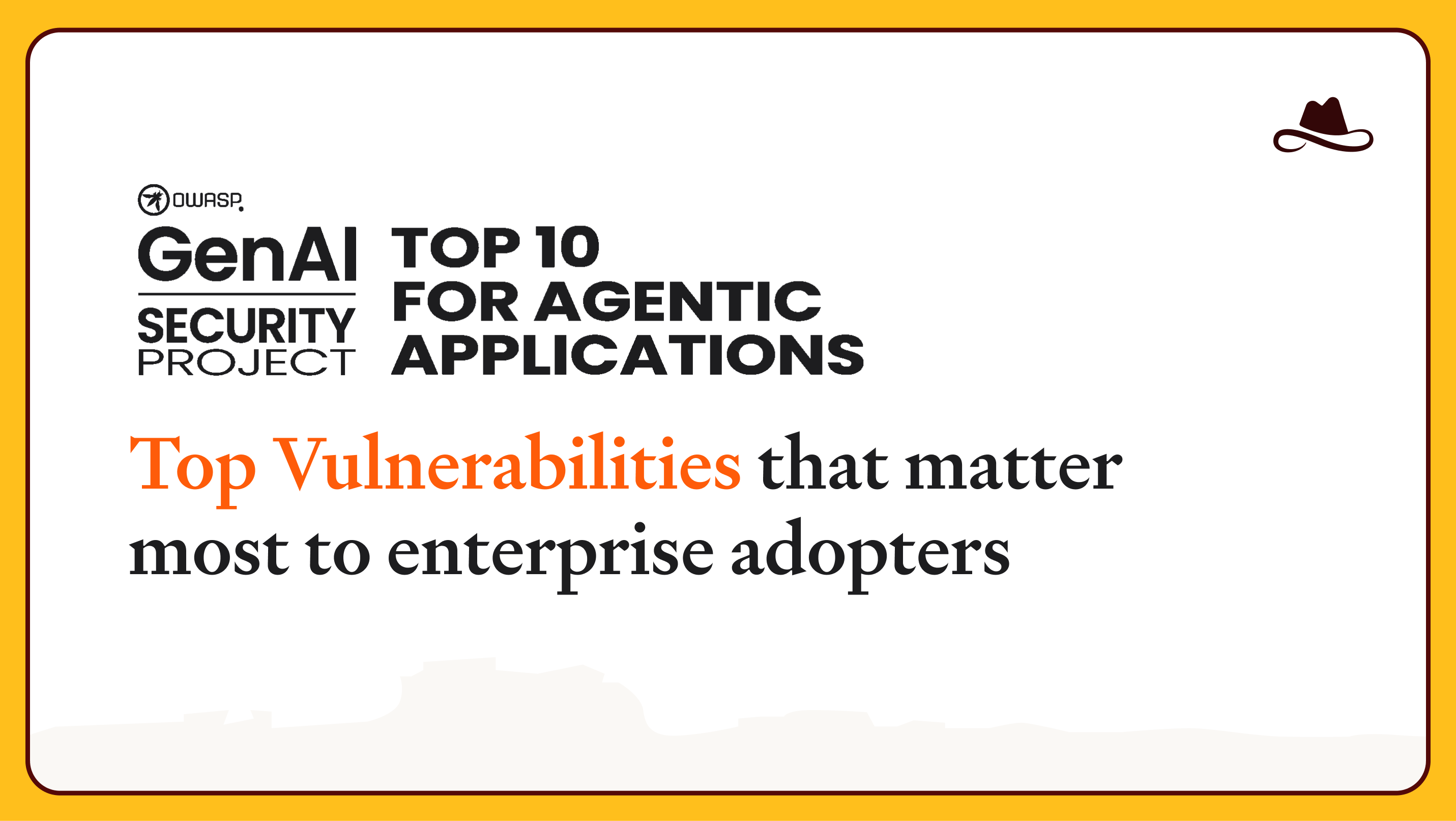Shadow AI isn’t some theoretical risk. It’s a daily reality in modern enterprises. As AI adoption accelerates, employees are quietly introducing generative AI tools into workflows, often without oversight. These unauthorized AI tools bring powerful capabilities, but also significant risks: data leakage, compliance violations, and untraceable decisions.
Most organizations have no visibility into how these shadow AI systems are used, or what they’re doing with sensitive data. To make sense of this growing threat, we’re unpacking what shadow AI really looks like inside the enterprise: where it hides, why it’s risky, and how to bring it under control without halting innovation.
Key Takeaways:
- Shadow AI Is Already in Use: Employees are using generative AI tools like ChatGPT and Claude at work, often without approval, putting sensitive data at risk.
- Big Risks, Low Visibility: Shadow AI can cause data leaks, compliance failures, and biased or inaccurate decisions, all without an audit trail.
- Why It’s Hard to Catch: These tools are easy to access, spread across teams, and often fly under the radar of traditional security systems.
- How to Take Control: Set clear policies, train employees, monitor usage, and do regular audits to manage shadow AI safely.
- Lasso Helps Manage the Risk: Tools like Lasso give real-time visibility into AI usage, enforce policies, and help organizations stay compliant without slowing teams down.
What is Shadow AI?
Shadow AI refers to the unauthorized use of artificial intelligence tools, applications, and models within an organization, outside the purview of IT or security teams. As the adoption of advanced AI technologies accelerates, so do the risks they introduce when left unmanaged.
It often begins with well-meaning employees turning to popular generative AI tools like ChatGPT, Claude, or Midjourney to increase productivity. But without proper governance or oversight, these tools can introduce major risks: data leakage, compliance failures, and insecure model behavior.
Shadow AI vs Shadow IT
Shadow IT introduced unsanctioned apps. Shadow AI takes it further, embedding unvetted intelligence into daily workflows. It’s no longer just about what’s being used, but what it’s thinking.
So while the term 'shadow AI' is newer, it shares DNA with the more familiar concept of shadow IT. But the stakes are higher. Here's how the two compare:
Why Shadow AI is a Risk for Modern Organizations
Unvetted AI Tools Bypass Security Protocols
Freemium AI tools often bypass corporate firewalls, identity providers, and DLP controls. Employees may upload sensitive files or copy/paste client data into a chatbot without realizing the tool logs or stores it.
These tools are not governed by corporate security policies, making it impossible to track or control the flow of sensitive data. This exposes organizations to all the risks identified in the OWASP Top 10 LLM vulnerabilities, including prompt injection and sensitive data exposure.
Risks of Data Exposure and Loss
Many GenAI tools retain conversations for model training or product improvement. That means sensitive data shared with a chatbot could reappear in a future interaction, available to other users. That includes client names, financial figures, even source code. Even tools with "opt-out" settings require manual configuration, which many employees skip. This raises the risk of AI package hallucinations, where a model reuses or invents outputs that resemble previously ingested sensitive data.
Complicates Regulatory Compliance (GDPR, HIPAA, SOC 2)
Shadow AI usage introduces unknown variables into regulated environments. GDPR requires a legal basis for processing personal data and the ability to erase it. HIPAA demands strict control over patient data. When employees use unauthorized AI tools, these safeguards break down, creating audit failures and regulatory exposure.
Reinforces Bias and Makes Unmonitored Decisions
AI models reflect the data they were trained on, and often amplify its biases. Shadow AI tools can produce discriminatory outputs or hallucinate facts that shape business decisions without human review. Worse, without logs or monitoring, there may be no record of how or why a flawed decision was made. That leaves organizations exposed to a wide spectrum of LLM cybersecurity threats, from prompt injection to output manipulation.
How Shadow AI Emerges in Organizations
A sales director installs a new email assistant to speed up outreach. A junior legal analyst uses ChatGPT to summarize an NDA. A marketing lead drafts ad copy with a freemium browser plugin. None of them mean harm. But without oversight, each action quietly introduces risk. Shadow AI usually doesn’t emerge from malicious intent. It grows from convenience, pressure, and a lack of clear guardrails.
- Teams Using AI Tools Without IT Oversight: Marketing, HR, and legal teams often adopt GenAI tools to draft content or analyze contracts, unknowingly exposing sensitive data.
- Lack of Clear AI Governance Policies: If the organization hasn’t formally defined what tools are allowed or how to use them, employees will improvise.
- Explosion of Freemium AI Tools in SaaS Stacks: AI capabilities are now embedded everywhere: writing assistants, analytics plugins and more, often turned on by default.
Common Shadow AI Tools Found in Workplaces
A team’s favorite AI tools rarely start with a formal rollout. Instead, someone pastes client notes into ChatGPT, or uses a generative AI feature in an EHR dashboard to summarize patient case notes. These tools blend into daily workflows so smoothly that most security teams don’t know they’re there, let alone what data they’re touching.
But behind the convenience lies a growing attack surface that multiplies every time an employee adds a new AI tool to the mix.
Chatbots Like ChatGPT, Gemini, or Claude
These tools are used for brainstorming, summarization, and data formatting. But without proper security controls, they also become vectors for data leakage.
Copywriting and Content Automation Tools
Products like Jasper or Copy.ai allow marketers to speed up campaign development, but they also invite intellectual property risks and unreviewed outputs.
AI-Powered Analytics and BI Add-Ons
AI assistants embedded in dashboards or spreadsheets can auto-generate summaries from sensitive financial or HR data, without audit trails or access controls.
Unvetted AI Assistants in CRM, Marketing, and Design
Sales reps, designers, and CX teams may use AI plugins to automate replies or create assets. These tools often lack fine-grained role permissions or data masking.
Consequences of Ignoring Shadow AI
Unlike shadow IT, shadow AI introduces risk with no audit trail, no accountability, and no warning signs (until it’s too late).
Sensitive data slips through unapproved channels. Critical decisions are shaped by unverifiable outputs. And when regulators or stakeholders come asking, there’s no system of record to explain what happened. The longer this goes unmanaged, the harder it becomes to untangle its impact.
Here's what’s at stake:
- Unauthorized Sharing of Sensitive Data: Confidential business, legal, or personal data may be exposed through AI tool interactions.
- Inaccurate Business Decisions from Flawed AI Outputs: Outputs from unreviewed models can be biased, wrong, or outright fabricated.
- Audit Failures and Legal Exposure: Without records of tool use or outputs, compliance and legal teams can’t answer regulators.
- Loss of Stakeholder Trust and Reputation: When stakeholders learn that sensitive data was handled by unapproved systems, credibility is lost.
Why Shadow AI is Hard to Detect and Govern
More than a policy issue, shadow AI is an operational blind spot. These challenges make it exceptionally difficult for security teams to detect, monitor, and manage:
5 Best Practices to Control Shadow AI
Managing a moving target like shadow AI calls for more than a simple checklist. Security practices should reflect the unique challenges of generative AI tools and LLMs. Below are five best practices that blend policy, education, and technical controls.
1: Define a Clear Policy on Approved AI Tools
Don’t just block tools. Instead, create a clear, centralized inventory of which AI tools are approved, for what purposes, and under what access controls. Include guidelines for plugin-based assistants embedded in CRMs, design platforms, and browser extensions.
2: Educate Employees on Acceptable AI Use
Training should cover real-world risks like prompt injection, model hallucinations, and accidental data exposure. Help teams understand that just because an AI tool seems safe doesn’t mean it’s compliant, secure, or appropriate for enterprise use.
3: Use Role-Based Access and Permissions
Not all AI access should be created equal. Implement RBAC across your AI stack to ensure that only the right users have access to sensitive data or use cases. For tools with embedded AI (like Salesforce Einstein or Notion AI), fine-tune access based on job function and risk level.
4: Set Up Monitoring and Alert Systems
Use tools like Lasso to track usage across shadow AI tools and detect behavioral anomalies in real time. Lasso’s Shadow LLM capability provides always-on discovery, showing you who is using GenAI, where, and how, without waiting for a security incident to surface.
5: Conduct Regular Shadow AI Audits
Shadow AI doesn’t stay static. As new tools emerge, periodic audits are essential. Go beyond surface-level SaaS discovery and look for in-browser usage, API-connected GenAI services, and unauthorized model deployments in engineering or analytics teams. Automate parts of this audit process with solutions like Lasso to keep pace with rapid adoption.
How Lasso Secures Your Organization by Eliminating Shadow
AI Risks
Lasso provides continuous visibility into shadow AI usage across your enterprise. Its always-on discovery engine identifies browser-based GenAI interactions, categorizes usage by risk level, and applies customizable security policies. With real-time threat detection, role-based access controls, and audit-ready logs, Lasso sheds light on your organization’s shadow AI without disrupting productivity.
Unlike traditional security tools, Lasso is purpose-built for GenAI oversight. Whether your team uses internal models or external assistants, Lasso closes the visibility gap, enforces policy automatically, and simplifies AI compliance across all shadow AI tools in your organization.
Bring Shadow AI Into the Light With Lasso
Shadow AI is already affecting your organization in some way. And without proactive governance, its impact will only grow. To protect your data, your compliance standing, and your business integrity, security leaders must prioritize visibility, education, and technical enforcement. The goal isn’t to stop AI adoption. It’s to make it safe, secure, and aligned with enterprise policy from day one.
Lasso makes that possible, equipping enterprises with real-time monitoring, policy enforcement, and continuous discovery that turns shadow AI from a blind spot into a managed risk.






